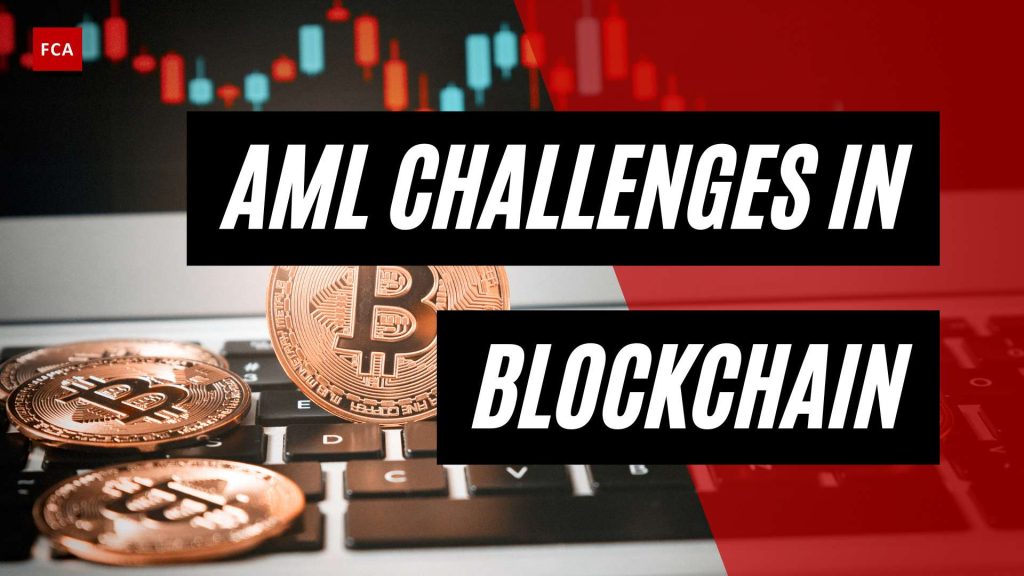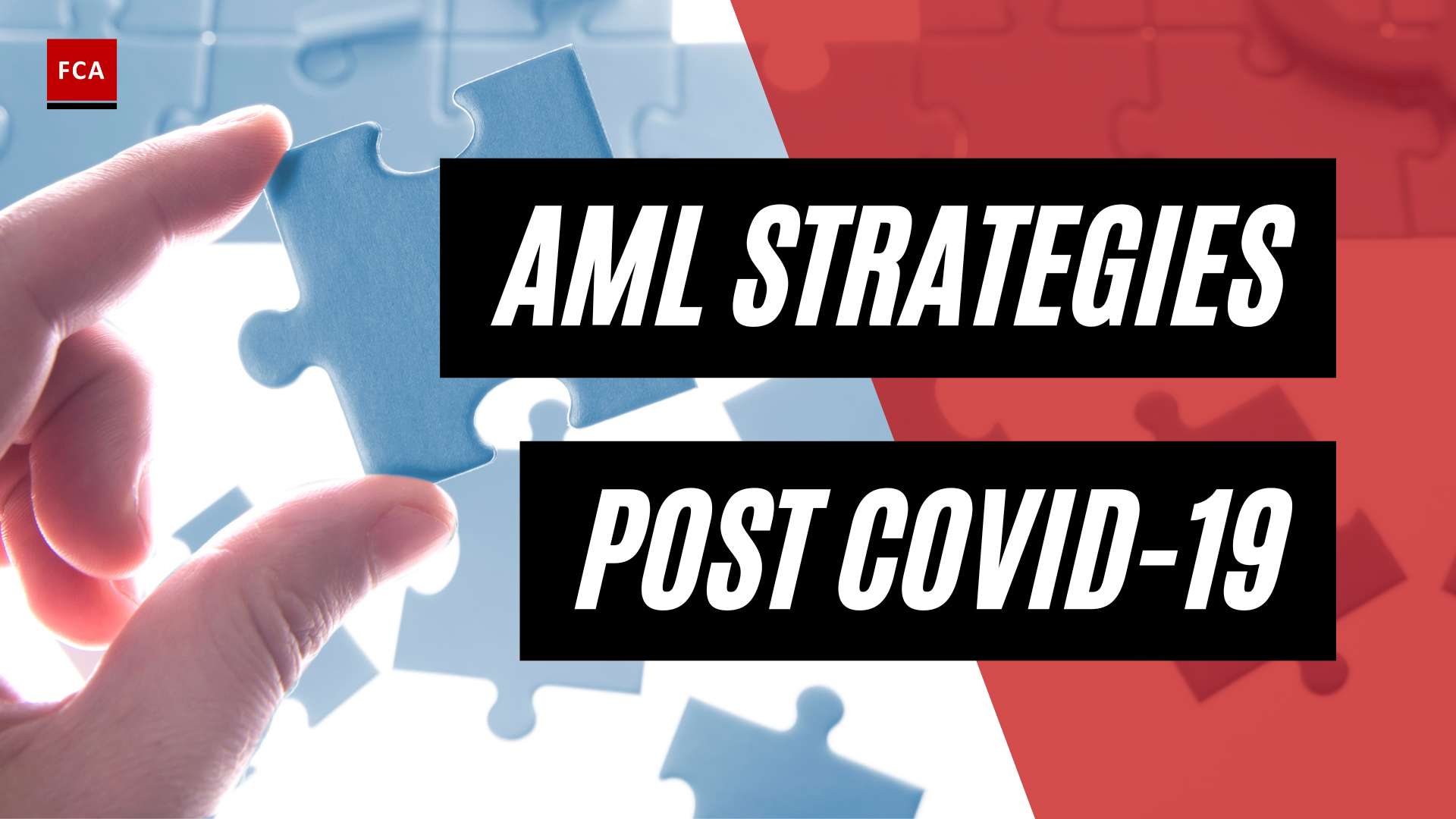AML Challenges in Blockchain
Blockchain technology has revolutionized various industries, including finance and transactions. However, it has also brought new challenges in terms of anti-money laundering (AML) compliance. Understanding and addressing these challenges is crucial for combating illicit activities and maintaining the integrity of the financial system.
Anonymity and Borderless Transactions
While blockchain technology offers transparency and traceability of transactions, the inherent anonymity and borderless nature of cryptocurrencies can pose significant challenges for AML efforts. The use of pseudonyms and cryptographic keys makes it difficult to identify the individuals behind transactions. This anonymity allows money launderers to exploit the system by conducting illicit activities without leaving a clear digital trail.
Regulators and traditional financial institutions face the challenge of developing effective methods to trace and monitor transactions on the blockchain. It requires collaboration and the development of advanced analytical tools to uncover suspicious patterns and identify potential money laundering activities. By leveraging technologies like blockchain analytics and artificial intelligence, authorities can enhance their AML detection capabilities and stay ahead of emerging risks.
Privacy Coins and Mixing Services
The emergence of privacy coins and mixing services further complicates AML efforts in the blockchain space. Privacy coins, such as Monero and Zcash, offer enhanced privacy features that obscure transaction details, making it challenging to track and monitor illicit activities. These coins utilize advanced cryptographic techniques to hide the sender, recipient, and transaction amount, impeding traditional AML measures.
Mixing services, also known as tumblers or mixers, allow users to obfuscate the source of their funds by combining them with others before sending them to the intended recipient. This process makes it difficult to trace the origin of the funds and identify any illicit activities associated with them.
Regulators and law enforcement agencies are actively working to address these challenges by developing regulations and implementing measures to regulate privacy coins and monitor mixing services. By establishing clear guidelines and requirements for these technologies, authorities aim to strike a balance between privacy and AML compliance.
KYC and CDD in the Cryptocurrency Sector
The cryptocurrency sector faces unique challenges when it comes to implementing Know Your Customer (KYC) and Customer Due Diligence (CDD) processes. KYC procedures are crucial in identifying and verifying the identities of customers, while CDD involves assessing the risks associated with specific customers and transactions.
Ensuring effective KYC and CDD compliance within the cryptocurrency sector is essential for mitigating AML risks and complying with regulatory requirements worldwide. Cryptocurrency exchanges and other virtual asset service providers (VASPs) must establish robust KYC and CDD procedures to prevent money laundering and terrorist financing.
By requiring users to provide identification documents, proof of address, and other relevant information, VASPs can enhance their ability to detect suspicious activities and report them to the appropriate authorities. Implementing effective KYC and CDD measures can help build trust in the cryptocurrency sector and foster a more secure and compliant environment.
Addressing the AML challenges in blockchain requires collaboration between regulators, financial institutions, and technology providers. By staying updated on the evolving regulatory landscape, leveraging advanced technologies, and promoting information sharing, stakeholders can work together to combat money laundering and protect the integrity of the financial system.
Evolving AML Challenges in Blockchain
As blockchain technology continues to evolve, so do the challenges related to anti-money laundering (AML) efforts. In this section, we will explore three key areas where AML challenges in blockchain are evolving: decentralized finance (DeFi) and non-fungible tokens (NFTs), the lack of uniform AML regulations, and the need to enhance AML detection capabilities.
Decentralized Finance (DeFi) and NFTs
The rise of decentralized finance (DeFi) and non-fungible tokens (NFTs) has added new layers of complexity to AML challenges in the blockchain space. DeFi applications provide financial services without the need for traditional intermediaries, creating opportunities for individuals to engage in financial activities outside the realm of traditional regulatory oversight (Bloomberg Law). The decentralized nature of DeFi platforms and the lack of centralized control make it challenging to implement robust AML measures and detect illicit activities. Similarly, the increasing popularity of NFTs, which represent unique digital assets, has raised concerns about potential money laundering risks associated with the purchase and sale of these tokens.
Lack of Uniform AML Regulations
The lack of uniform AML regulations across jurisdictions is a significant challenge for financial institutions and blockchain companies operating globally. The absence of standardized AML requirements makes it difficult to establish consistent compliance frameworks and increases the complexity of cross-border transactions (Bloomberg Law). Varying regulatory approaches and interpretations create compliance gaps and increase the risk of regulatory violations. A harmonized global regulatory framework is necessary to effectively address AML challenges in the blockchain sector.
Enhancing AML Detection Capabilities
Financial institutions and regulators are increasingly focused on enhancing their AML detection capabilities in the context of blockchain transactions. The pseudonymous nature of blockchain transactions, coupled with the cross-border nature of cryptocurrency transfers, creates challenges for AML monitoring and identification of suspicious activities (Bloomberg Law). To mitigate these risks, there is a growing need for advanced technologies and analytics that can analyze transaction patterns, detect anomalies, and identify potential money laundering activities. Artificial intelligence and machine learning algorithms are being leveraged to improve AML detection and enhance the effectiveness of compliance programs in the blockchain ecosystem.
Addressing the evolving AML challenges in the blockchain space requires collaborative efforts between regulators, financial institutions, and blockchain companies. The establishment of uniform AML regulations, information sharing protocols, and the adoption of advanced AML detection technologies are essential steps to mitigate the risks associated with money laundering and illicit activities in the blockchain sector. By staying ahead of these challenges and continuously adapting to the evolving landscape, stakeholders can work towards a more secure and compliant blockchain ecosystem.
Addressing AML Challenges in Blockchain
To effectively tackle the AML challenges in blockchain, collaborative efforts, regulation and supervision, and leveraging technology are vital components. Addressing these challenges requires a comprehensive approach involving industry participants, regulators, law enforcement agencies, and technology providers.
Collaborative Efforts and Information Sharing
Collaboration among various stakeholders is crucial to effectively address the evolving AML challenges in blockchain. Industry participants, regulators, and law enforcement agencies must work together to share information and best practices. This collaborative approach helps in identifying emerging trends, patterns, and potential risks associated with money laundering and illicit activities within the blockchain ecosystem. By establishing effective communication channels and fostering information sharing, stakeholders can enhance their collective ability to detect, prevent, and investigate suspicious transactions.
Regulation and Supervision of Cryptocurrency Markets
Proper regulation and supervision of cryptocurrency markets play a vital role in addressing AML challenges in blockchain. Regulators and policymakers need to develop and enforce robust AML regulations that are specifically tailored to the unique characteristics of blockchain technology and cryptocurrencies. This includes implementing know-your-customer (KYC) and customer due diligence (CDD) measures to enhance transparency and accountability in cryptocurrency transactions.
By ensuring compliance with AML regulations, financial institutions and cryptocurrency service providers can contribute to the overall integrity of the blockchain ecosystem. Regulators must monitor and supervise cryptocurrency markets to detect and deter illicit activities effectively. This includes conducting audits, inspections, and investigations to identify any potential weaknesses or vulnerabilities that could be exploited by money launderers or criminals (UNODC).
Leveraging Technology for AML Compliance
In the fight against money laundering and illicit activities in blockchain, leveraging technology is crucial. Innovative tools and solutions, such as artificial intelligence (AI), machine learning, and data analytics, can significantly enhance AML detection capabilities. These technologies enable real-time monitoring, risk assessment, and detection of suspicious activities on the blockchain. By analyzing vast amounts of data and identifying patterns, these tools can help identify potential money laundering schemes and facilitate timely intervention.
Moreover, technology can aid in automating compliance processes, streamlining transaction monitoring, and reducing false positives. By leveraging blockchain-specific AML software and solutions, financial institutions and cryptocurrency service providers can enhance their ability to identify and mitigate risks associated with money laundering and illicit activities.
By embracing collaborative efforts, effective regulation, and leveraging technology, stakeholders can address the AML challenges in blockchain more comprehensively. This holistic approach contributes to the overall integrity, transparency, and security of the blockchain ecosystem, enabling a safer environment for financial transactions while combating financial crimes and illicit activities.
AML Challenges in Blockchain: Complexities and Risks
The intersection of blockchain technology and anti-money laundering (AML) efforts presents several complexities and risks. To effectively combat money laundering in the blockchain ecosystem, it is crucial to understand and address these challenges. This section explores three key challenges: criminal tactics in money laundering, lack of cooperation and insufficient resources, and data and technology limitations.
Criminal Tactics in Money Laundering
Criminals are constantly evolving their tactics to launder money and exploit the features of blockchain technology. They utilize various techniques, including the use of shell companies, offshore accounts, and digital currencies, to conceal the source and movement of illicit funds. Complex transactions, such as layering and integration, are employed to hinder financial institutions’ ability to trace the origin of funds (Sanction Scanner).
The decentralized and pseudonymous nature of blockchain transactions makes it challenging to identify the individuals involved in illicit activities. Criminals exploit these attributes to engage in money laundering schemes, further complicating the detection and prevention efforts of AML professionals.
Lack of Cooperation and Insufficient Resources
The effectiveness of AML efforts in the blockchain ecosystem relies on collaboration and information sharing among financial institutions, regulatory authorities, and other stakeholders. However, there may be a lack of cooperation due to concerns regarding legal liability. Financial institutions may hesitate to share information with each other or regulatory authorities, hindering the collective fight against money laundering. This lack of cooperation makes it difficult to create a comprehensive view of suspicious activities and patterns (Sanction Scanner).
Additionally, both financial institutions and regulatory authorities may face resource constraints. Financial institutions may lack the necessary expertise and technology resources to effectively analyze and monitor blockchain transactions for potential money laundering activities. Regulatory authorities may also struggle with limited resources and expertise to analyze the information provided by financial institutions. These challenges impede the timely and accurate identification of suspicious transactions.
Data and Technology Limitations
Data and technology limitations pose significant challenges in addressing money laundering risks within the blockchain ecosystem. Financial institutions often face hurdles in obtaining comprehensive and accurate data related to customers, transactions, and third-party entities. Insufficient data can hinder the identification of suspicious activities and the ability to establish a clear understanding of the money laundering schemes.
Moreover, financial institutions and regulatory authorities may encounter technology limitations in terms of the analytics tools needed to effectively detect and prevent money laundering activities on the blockchain. The complex and rapidly evolving nature of blockchain technology requires advanced data analytics capabilities to identify patterns, anomalies, and potential risks. The lack of access to such tools can undermine AML efforts and leave vulnerabilities in the detection and prevention of money laundering activities.
Addressing these complexities and risks requires collaborative efforts, regulatory supervision, and technological advancements. By fostering cooperation, enhancing resources, and leveraging innovative solutions, stakeholders can work towards a more effective and robust AML framework in the blockchain ecosystem.
Cross-Border AML Compliance in Blockchain
Ensuring anti-money laundering (AML) compliance in the blockchain space becomes even more complex when it involves cross-border transactions. Banks and financial institutions face unique challenges when navigating multi-jurisdictional compliance standards, the demands of cross-border transactions, and the talent acquisition and turnover in AML.
Multi-Jurisdictional Compliance Standards
Managing cross-border and multi-jurisdictional AML compliance standards can present significant challenges for banks and financial institutions. They often need to adhere to various AML regulations across different jurisdictions, making it difficult to ensure compliance organization-wide. The lack of harmonization among AML regulations adds complexity and increases the compliance burden. Financial institutions must navigate different reporting requirements, customer due diligence measures, and transaction monitoring protocols to meet the diverse compliance obligations they face.
Challenges of Compliance for Banks and Financial Institutions
Financial institutions encounter several challenges when it comes to cross-border AML compliance in the blockchain space. Some of these challenges include:
-
Lack of Cooperation and Insufficient Resources: Cooperation among financial institutions and regulatory authorities is crucial for effective AML compliance. However, concerns about legal liability can hinder information sharing between institutions. Additionally, regulatory authorities may lack the resources or expertise to analyze the vast amount of information provided by financial institutions, hampering the effectiveness of AML efforts.
-
Data and Technology Limitations: Financial institutions often face challenges due to insufficient data or technology resources to effectively detect and prevent money laundering activities. This can include a lack of comprehensive customer, transaction, or third-party data, as well as a deficiency in analytics tools to identify suspicious activities. Overcoming these limitations is crucial for enhancing AML compliance in the cross-border blockchain landscape.
Talent Acquisition and Turnover in AML
Finding competent AML professionals can be a continuous struggle for banks and financial institutions operating in the cross-border blockchain space. The demand for skilled AML professionals often exceeds the available talent pool, resulting in a shortage of qualified candidates. Consequently, organizations face challenges in onboarding and training new employees, incurring high expenses in the process. Additionally, the high turnover rate of AML professionals necessitates continuous recruitment and training efforts to maintain a robust AML program (Sanction Scanner).
Addressing these challenges requires collaboration between financial institutions, regulatory authorities, and other stakeholders. It is essential to establish standardized information-sharing protocols, enhance regulatory cooperation, and invest in technology and resources to overcome the complexities of cross-border AML compliance in the blockchain sector. By working together and leveraging technology, banks and financial institutions can strengthen their AML compliance efforts and effectively combat money laundering in the evolving blockchain landscape.
Privacy Coins and AML Challenges
As the use of blockchain technology expands, so do the challenges in anti-money laundering (AML) efforts. One particular challenge arises from the existence of privacy coins, which provide a higher level of anonymity in blockchain transactions compared to “normal” cryptocurrencies. Privacy coins like Monero and Zcash conceal details about user addresses and the source of origin of the coins, making them harder to trace (UNODC). This increased anonymity poses specific challenges for AML compliance in the blockchain sector.
Anonymity and Privacy Coin Technology
Privacy coins offer users increased privacy and transactional anonymity. By employing various cryptographic techniques, these coins obscure the details of the transactions, making it difficult to trace the flow of funds. This anonymity can be exploited by criminals seeking to launder money or engage in illicit activities.
The use of privacy coins presents challenges for AML efforts as it makes it more difficult for authorities to track and monitor illicit activities conducted through cryptocurrencies (Financial Crime Academy). Regulators and law enforcement agencies face difficulties in identifying the parties involved and tracing the source and destination of funds.
Tracing and Monitoring Privacy Coin Transactions
Due to the enhanced privacy features of privacy coins, tracing and monitoring transactions involving these cryptocurrencies can be challenging. The use of mixing or blending services further complicates AML efforts. These services combine funds from multiple sources in one address, split them into portions, and send them to different addresses multiple times, making it nearly impossible to trace the funds back to their original source (UNODC). This mixing process obscures the source of funds, hindering AML investigations.
AML professionals and regulators must develop innovative ways to trace and monitor privacy coin transactions. Advanced analytics tools and blockchain analysis software can assist in identifying patterns and suspicious transactions, even within the realm of privacy-enhanced cryptocurrencies. Collaborative efforts between regulatory bodies, financial institutions, and technology providers are crucial to effectively address these challenges.
Regulating Privacy Coins for AML Compliance
To mitigate the risks associated with privacy coins, regulators and policymakers are exploring potential regulatory frameworks. The objective is to strike a balance between privacy and the need for AML compliance in the blockchain sector. These regulations aim to ensure that privacy coins are not abused for illicit purposes while still allowing legitimate privacy-focused transactions to take place.
Regulating privacy coins for AML compliance involves implementing measures that promote transparency and accountability. Regulators may require cryptocurrency exchanges and other virtual asset service providers to adhere to stricter know-your-customer (KYC) and customer due diligence (CDD) procedures when dealing with privacy coins. Additionally, authorities may work towards developing enhanced methods for tracking and monitoring privacy coin transactions.
By addressing the AML challenges posed by privacy coins, regulators and financial institutions can foster a safer and more compliant blockchain ecosystem. The development of effective regulations, collaboration among stakeholders, and the utilization of advanced technologies are key to striking the right balance between privacy and AML compliance in the blockchain industry.
Regulatory Landscape and AML Compliance in Blockchain
As blockchain technology continues to evolve, so do the regulatory frameworks surrounding anti-money laundering (AML) compliance. It is crucial for both virtual asset service providers (VASPs) and jurisdictions to establish effective measures to mitigate the risks associated with money laundering and illicit activities. In this section, we will explore the regulatory landscape and various aspects of AML compliance in blockchain.
FATF Standards for Virtual Asset Service Providers
The Financial Action Task Force (FATF) has introduced standards that require VASPs, such as cryptocurrency exchanges, to follow strict AML and combating the financing of terrorism (CFT) procedures. These standards aim to reduce AML risks related to cryptocurrencies and ensure that VASPs implement robust measures to prevent money laundering (Financial Crime Academy).
The FATF’s guidance emphasizes the importance of applying customer due diligence (CDD) measures, maintaining transaction records, and implementing risk-based approaches to identify and report suspicious activities. By complying with these standards, VASPs contribute to the overall integrity of the cryptocurrency ecosystem and help build trust in the industry.
AML Regulations in Different Jurisdictions
One of the challenges in AML compliance for blockchain is the lack of uniformity in regulations across different jurisdictions. Financial institutions and blockchain companies operating globally face the complexities of navigating varying regulatory landscapes and complying with multiple sets of rules (Bloomberg Law).
To ensure effective AML compliance, organizations must carefully monitor and adapt to the evolving regulatory requirements of the jurisdictions in which they operate. This includes staying up to date with changes in AML regulations and implementing appropriate measures to meet the specific compliance obligations of each jurisdiction.
Implementing AML Measures in Blockchain Ecosystems
Addressing AML challenges in the blockchain ecosystem requires collaborative efforts between industry participants, regulators, and law enforcement agencies. Collaboration helps foster information sharing, enhance detection capabilities, and develop effective solutions to combat money laundering and illicit activities (Bloomberg Law).
The implementation of AML measures in blockchain ecosystems involves several key elements. First, organizations need to establish robust internal controls and compliance programs tailored to the unique characteristics of blockchain technology. These programs should include comprehensive AML risk assessments, ongoing monitoring, and transaction analysis to identify suspicious activities.
Additionally, organizations should leverage advanced technologies, such as blockchain analytics and artificial intelligence, to enhance AML detection capabilities. These technologies enable the identification of patterns, anomalies, and potential risks associated with transactions on the blockchain.
By continuously adapting to regulatory changes, fostering collaboration, and leveraging technology, organizations can navigate the regulatory landscape and effectively address AML challenges in blockchain. This collaborative approach is vital for maintaining the integrity of the blockchain ecosystem and preventing illicit activities.








